The Pavilion of Great Britain is certainly one of the most visited pavilions at the Giardini of the Venice Biennale, along with perhaps neighboring France.The long queue that you usually have to face should not frighten you and above all should not make you give up by abandoning the venture, because in the opinion of this writer it is really worth it. As you approach the staircase flanked by two large trees through which you enter the British Pavilion, still outside therefore, you hear high female vocalizations that will make you wonder what awaits you inside, curious to find out. Once inside, in the first hall, you are catapulted into an environment that I would describe as modern and pop: the feeling is that of being a spectator in a music recording studio; small reflective cubes are placed as seats in front of a large, colorful, geometric wall that occupies virtually the entire room, inviting visitors to sit down and watch and listen on four side-by-side screens to videos of as many singers engaged in the very process of recording their voices (the ones heard outside the pavilion) in a recording studio. The viewer thus witnesses a choral scene: the singers’ individual voices intersect with each other and improvise a cappella to create a collective event and interaction. The one set up also becomes, in my opinion, a space for the audience to share and meet as well, as the visitor/viewer is invited to stop and sit down to enjoy this choral experience together with other people and perhaps comment with those sitting nearby. “I wanted to bring the two different communities, the audience and the singers, into one space, because it is through the audience that the musicians become known,” Boyce said.
Winner of the Golden Lion for best national participation, Britain’s pavilion is a blend of visual art and music, and arguably part of its strength lies in this union. Today, perhaps, as far as contemporary art is concerned, the viewer likes to feel like an all-around spectator, in a visiting experience that includes other senses, such as hearing or touch, in addition to sight, and the British pavilion goes fully toward this trend. The citation for the important award reads, “Sonia Boyce proposes another reading of stories through sound. Working in collaboration with other black women, she reveals a multitude of stories that have gone unheard. Boyce proposes a very contemporary language in the fragmented forms that the viewer reconstructs through her experience in the pavilion. Important questions of evidence are posed in opposition to perfect attunement, as well as the relationships between voices in the form of a chorus, at a distance and at different points in the exhibition”; sound, cooperation, attunement, freedom, contemporaneity: elements in fact that emerge clearly and powerfully from the exhibition commissioned by the British Council and curated by Emma Ridgway to which the title Feeling Her Way was given.
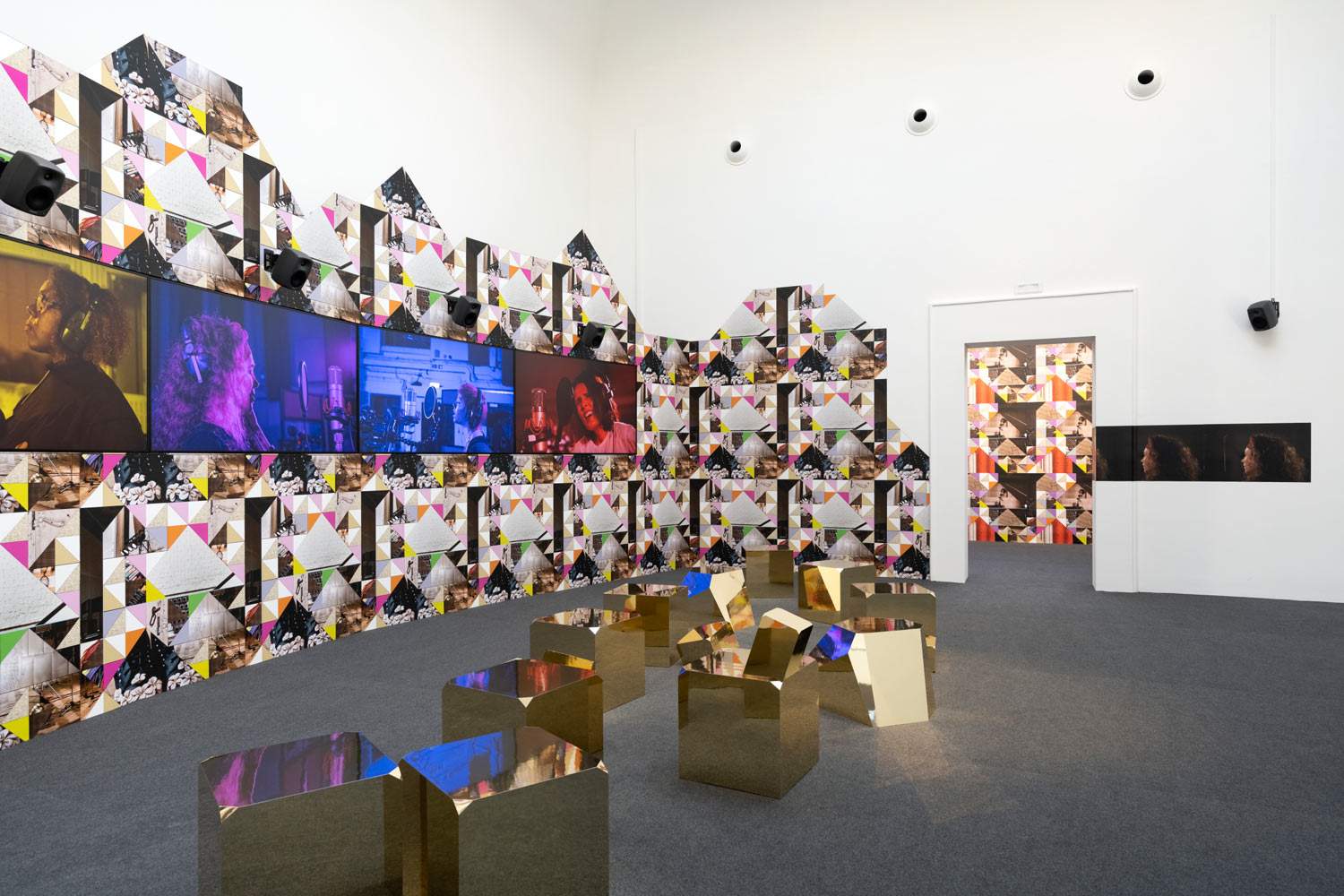
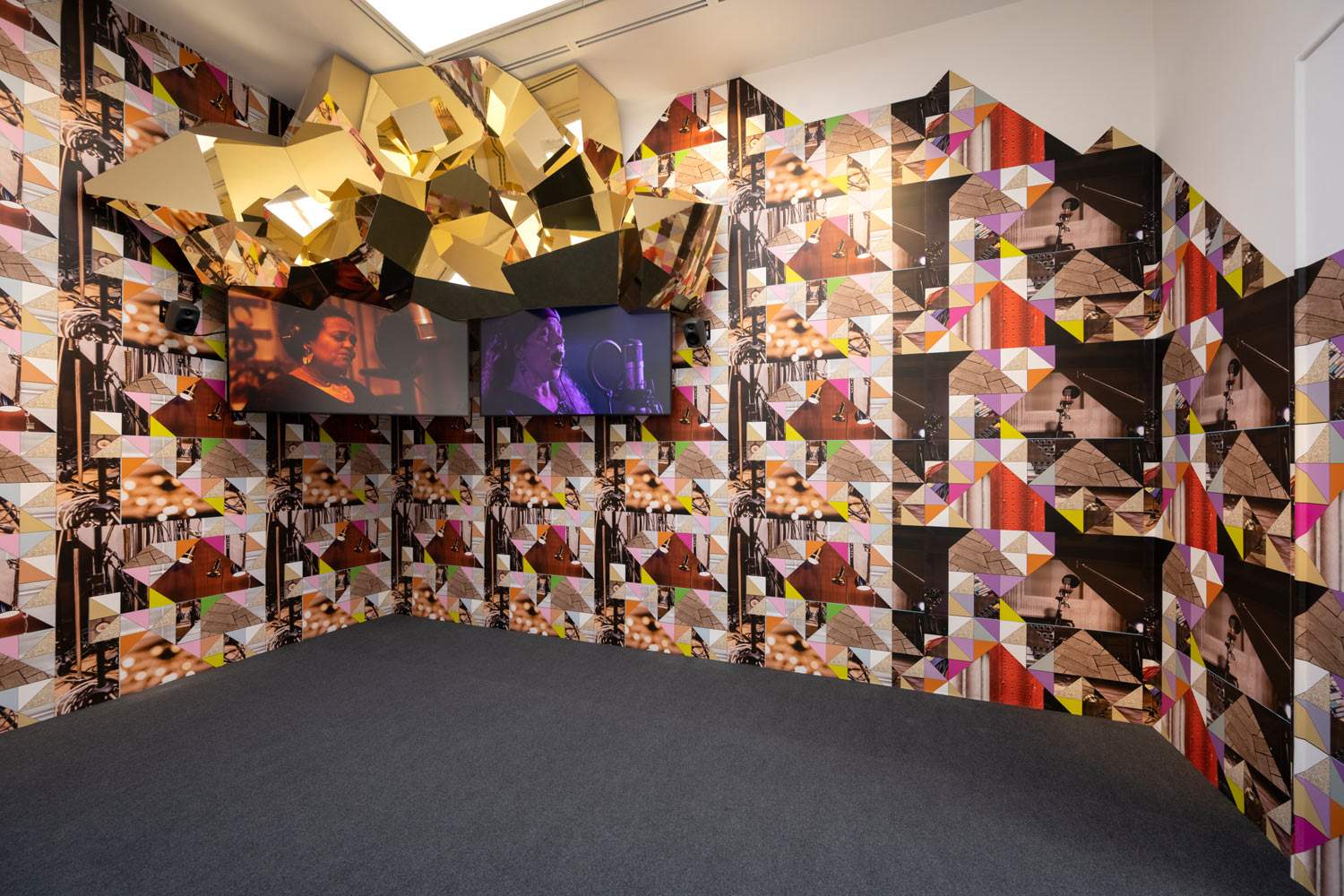 Great Britain Pavilion at the
Great Britain Pavilion at the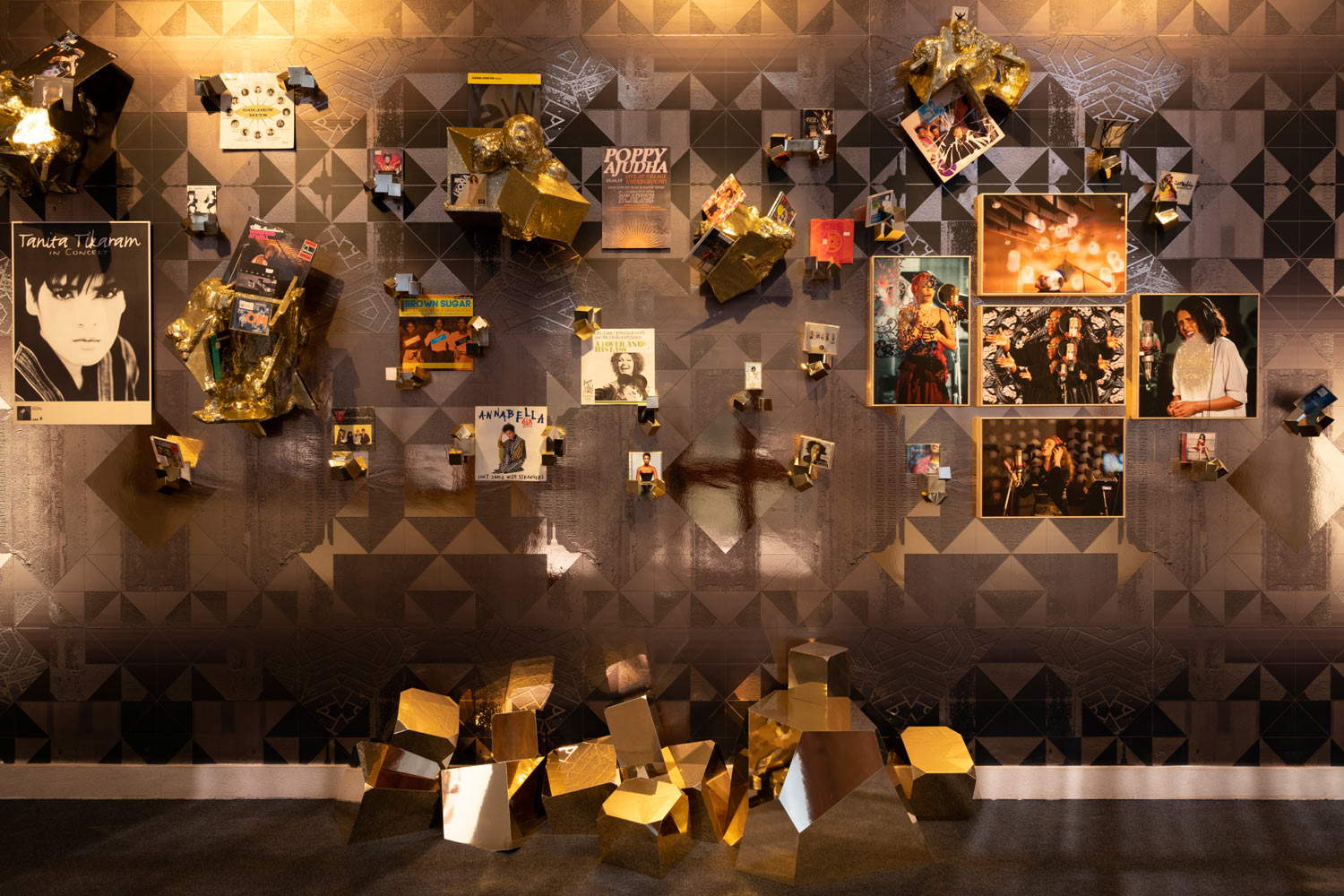 Great Britain Pavilion at the Venice Biennale 2022
Great Britain Pavilion at the Venice Biennale 2022 Great Britain Pavilion at the Venice Biennale 2022
Great Britain Pavilion at the Venice Biennale 2022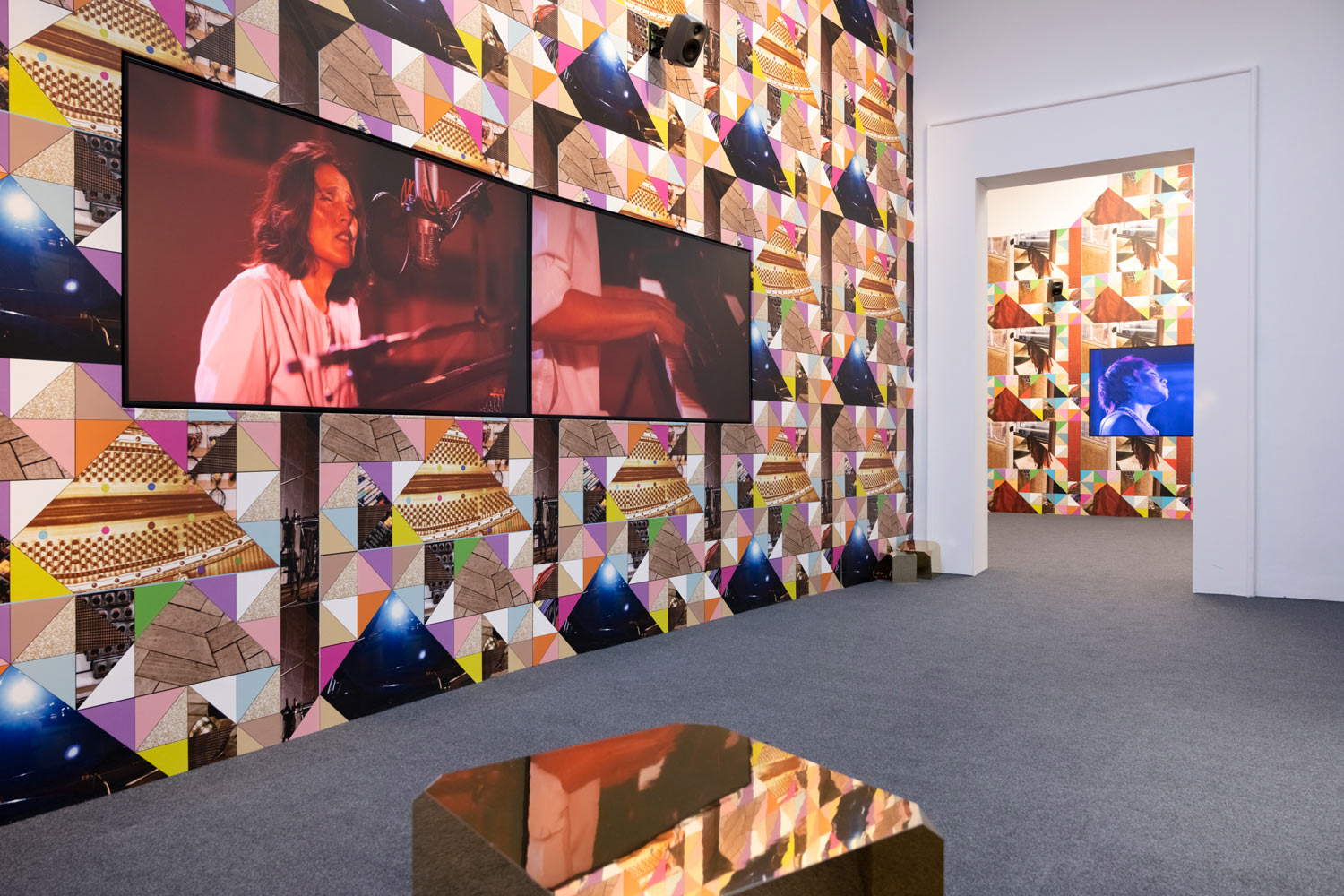 Pavilion of Great Britain at the Venice Biennale 2022
Pavilion of Great Britain at the Venice Biennale 2022The curator chose a single artist to represent Great Britain, Sonia Boyce (London, 1962), who nonetheless drew on the collaboration of five black female musicians to address the theme of black female music, or rather how black British female musicians have contributed to our emotional lives and transnational culture. The title, Feeling Her Way, as the curator recounts in her essay in the exhibition catalog, foregrounds the artist’s creative process: “finding one’s way instinctively, leaving behind expectations and changes, working with others, in iterative stages, to create a new work.” Boyce’s work focuses on interpersonal dynamics andimprovisation; according to the artist, it is through the performative mode that one’s identity comes out, performing to an audience. Through this installation, Boyce intends to lead people to discover new forms of expression, again through playful interactions and conversations.
During the making of Feeling Her Way, all the restrictions due to the pandemic, particularly social distance, were still in place, and singers could not perform live in front of an audience. At the invitation of Sonia Boyce, the singers featured in the first room videos, all award-winning and from different generations, met for the first time at London’s Abbey Road Studios (the Beatles’, to be clear) for an a cappella improvisation to demonstrate, through their beautiful jazz- and soul-influenced voices, the great possibilities of playful improvisation, interaction and cooperation as a means of creating something new. Improvisation refers back to the feeling of feeling free to make our own contribution in a way that suits us, thus revealing our identity. Boyce’s intent is to invite the audience to reflect on how much our voice reveals our identity and to celebrate the liberating process of performance and music. The artist uses music to reduce the distance between people because he knows it creates a sense of community between individuals. In the installation Boyce wanted to use, as an experiment, music without words, consisting only of vocalizations, to thus subvert the reassuring effect of predictability for the audience. Singing in this way, playfully, without meaning, also subverts interpersonal dynamics.
All this is based on the principle that our voice tells who we are; it is the sound of the voice that reveals our subjectivity, language, accents, rhythms, tones and feelings.
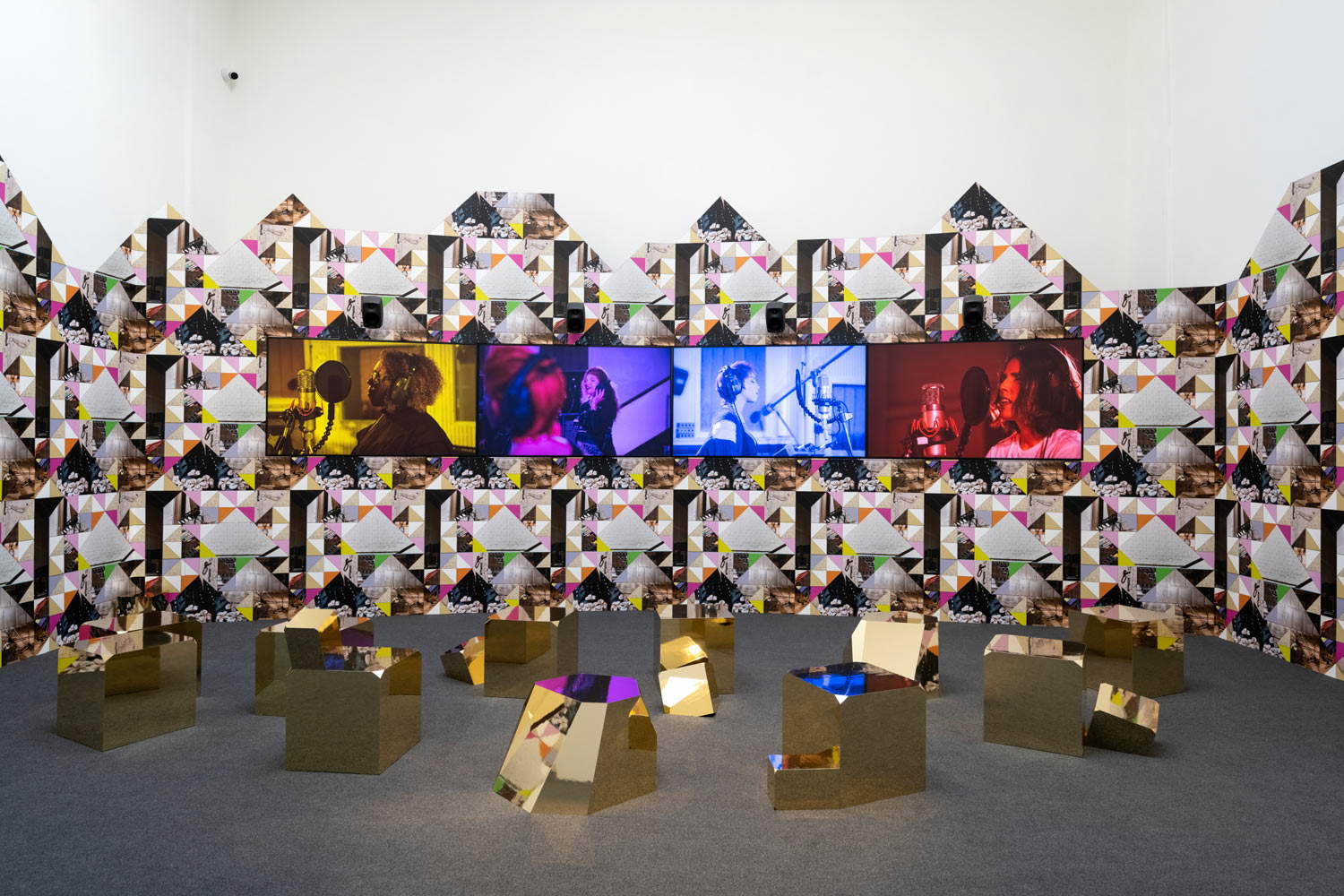
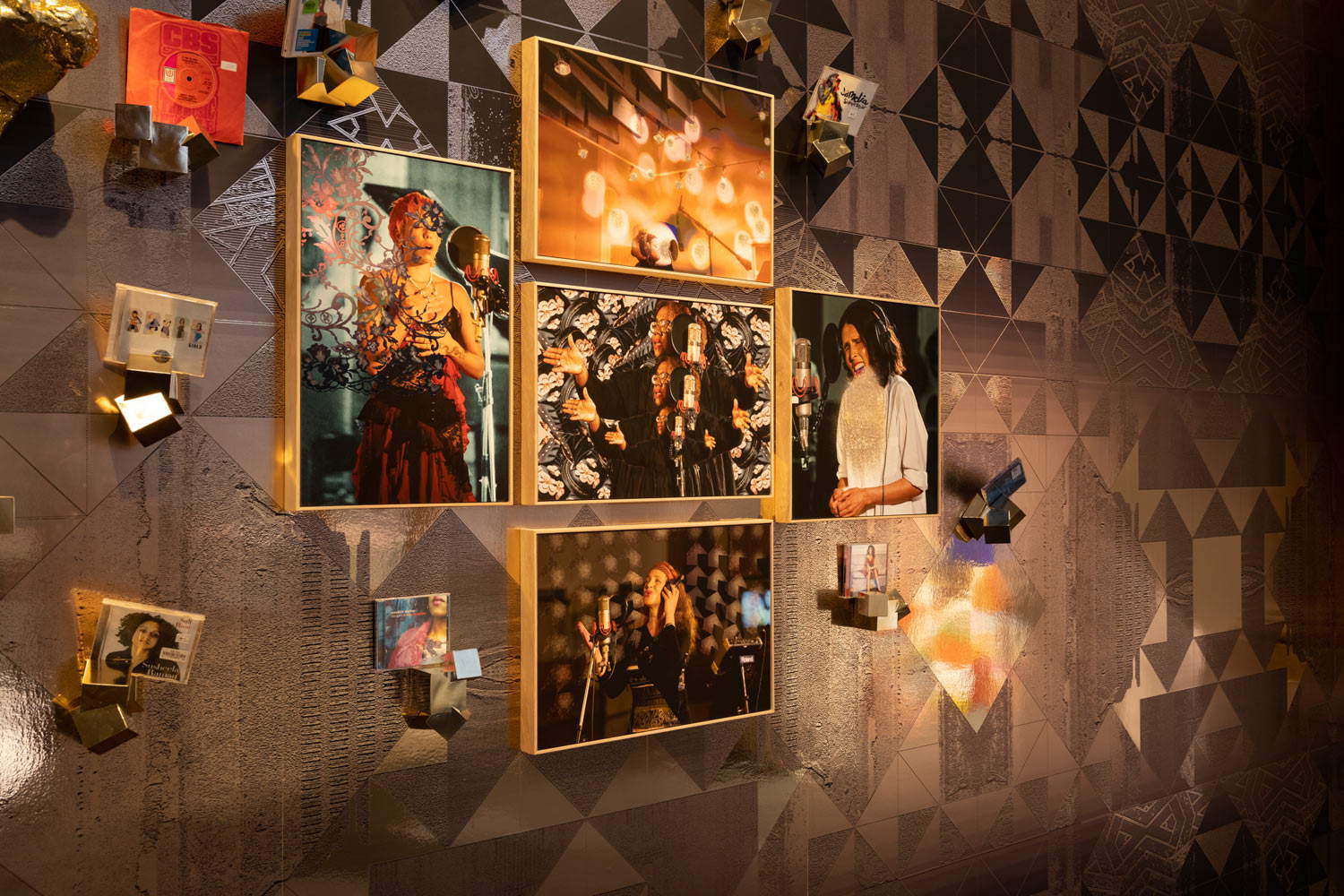 Pavilion of Great Britain at the
Pavilion of Great Britain at the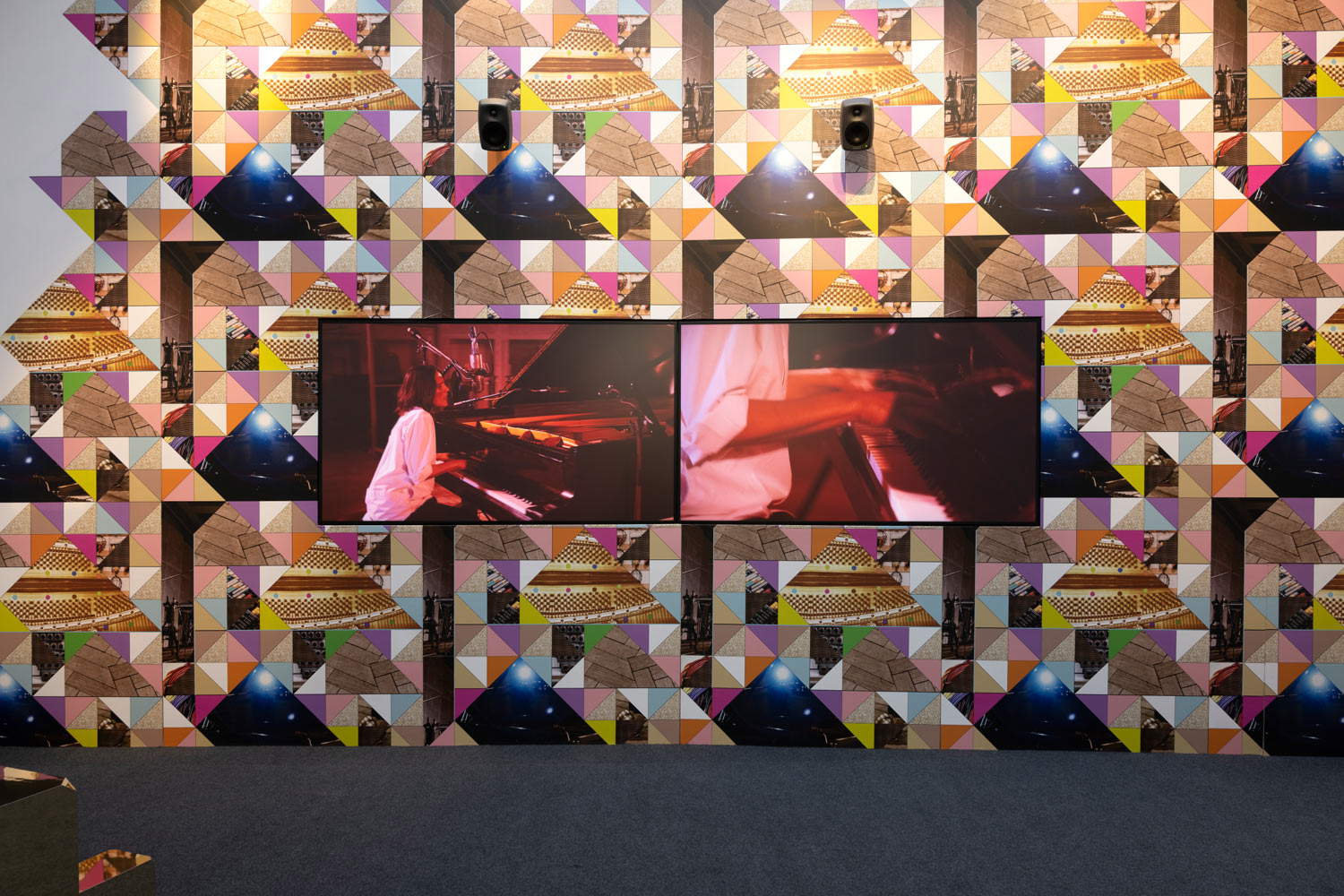 Pavilion of Great Britain at the Venice Biennale 2022
Pavilion of Great Britain at the Venice Biennale 2022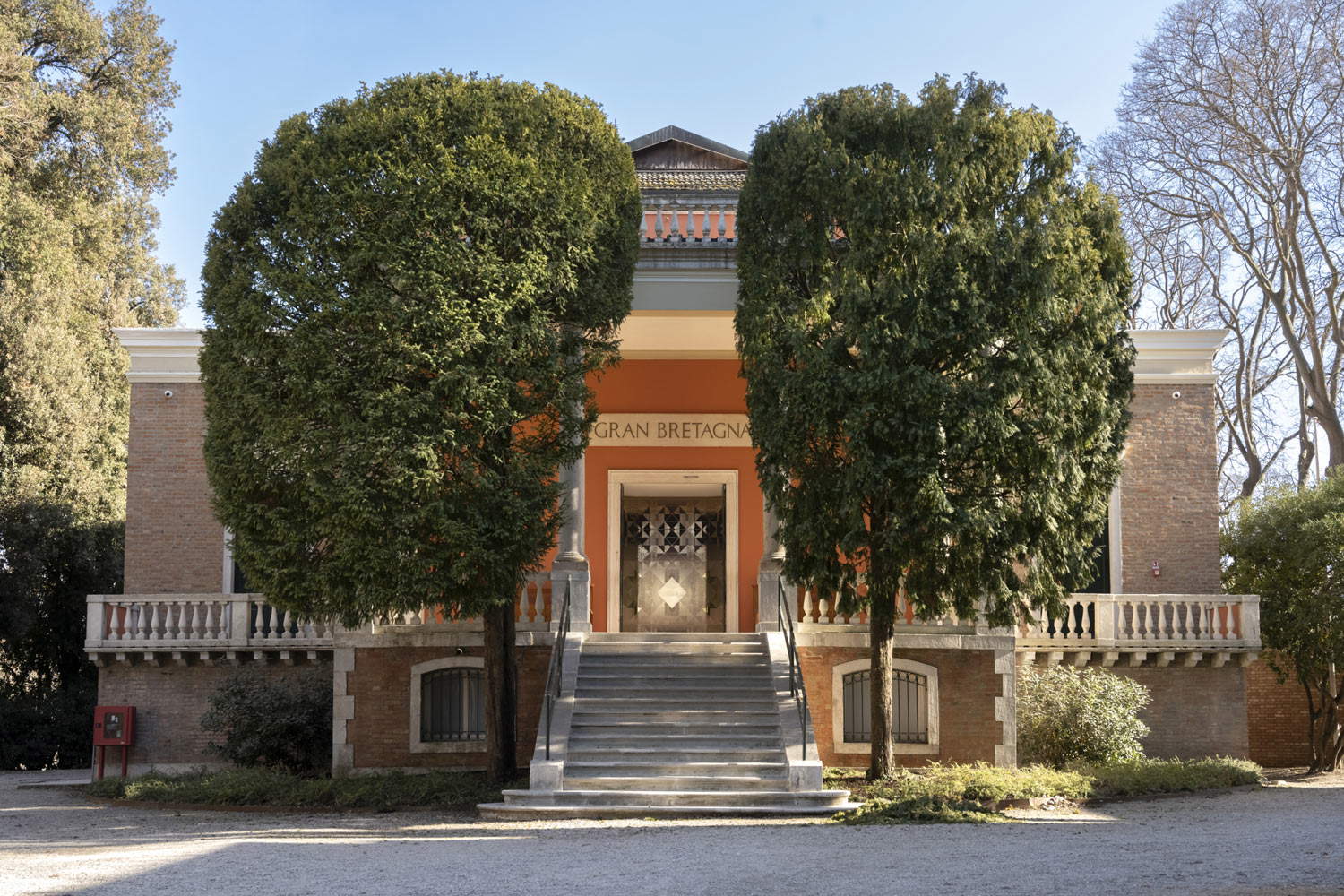
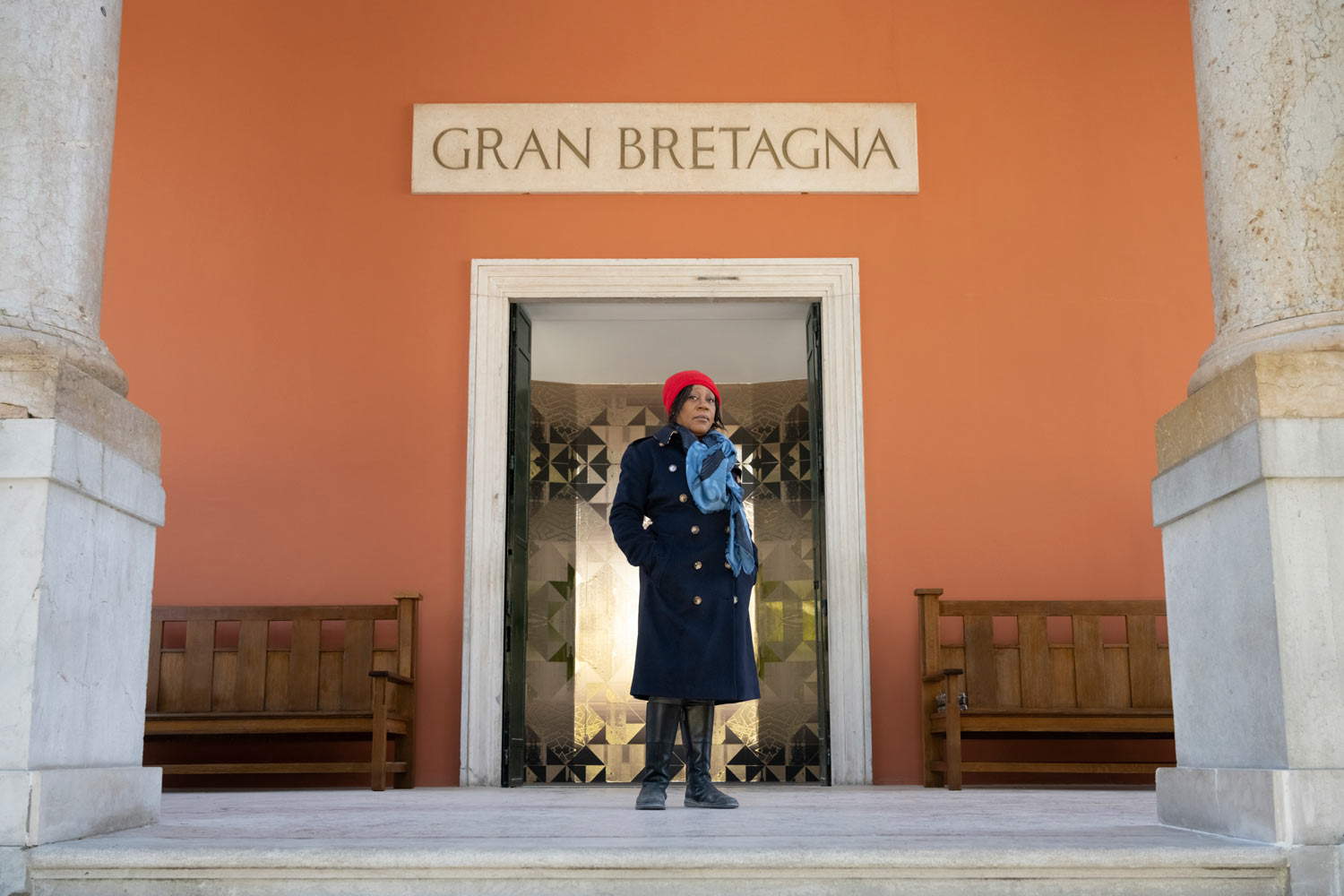
After the first room, the audience passes through five other rooms that in their arrangements echo those of the initial room, including the presence of colorful, geometric wallpapers and videos showing individual singers, sometimes through one screen sometimes through two side-by-side (in the third room the two screens are also topped by a golden cloud-like structure). It differs totally from this general arrangement, however (there are in fact no screens), the fourth room, which brings together numerous memorabilia from the Devotional Collection, including CDs, vinyls, album covers, posters, and photographic shots related to black women’s music to celebrate the cultural contribution of black British women in music that has long been a part of public life. Singers from different generations and musical genres, from Dame Shirley Bassey to the ska-pop group Amazulu, from Tamsin Archer to Shingai of the indie rock group Noisettes. The memorabilia is also supported by media that recall pyrite also known as “fool’s gold” because it creates reflective surfaces similar to gold; Boyce uses the reference to this material to reflect on social judgment and consensus in terms of value. Facing this wall, the visitor is invited to contemplate the memorabilia present and to notice his or her figure reflected in the gilded structures, as part of a non-identifiable audience of listeners. The artist intends to lament with this stratagem the fact that the voices of black British women are part of the soundtrack of millions of people’s lives, but often these women and their identity are forgotten.
A main feature of Boyce’s creative activity is collage , which he also employs in Feeling Her Way : images and videos of black female singers are combined with eccentric wallpapers in geometric shapes and almost tessellated pieces drawn by the artist. Each singer is then differentiated from the others through the color filter of the screen: Poppy Ajudha (1995) in blue, Jacqui Dankworth (1963) in purple, Sofia Jernberg (1963) in orange, Tanita Tikaram (1969) in red, and composer Errollyn Wallen (1958) in yellow-green; the artist emphasizes color in each element of her installation in order to reject Western prejudices about the “other” and focus instead on the voice. For this use of color she was influenced by Adrian Piper ’s (New York, 1948) artist’s book, Coloured People, in which each page containing a black-and-white photograph of a collaborator was colored by Piper in a single color. Instead, the geometric motif hints at Boyce’s affinity with Brazilian artist Lygia Clark (Belo Horizonte, 1920 - Rio de Janeiro, 1988), co-founder of Grupo Frente, a Brazilian movement that through geometric abstractionism expressed optimism toward a future of social equality. Color photographs placed on the wallpapers also show fragments of the singers’ meeting at recordings projected in the videos, as well as production tools such as microphone poles, cables and lights.
Because the British Pavilion at the 59th. International Art Exhibition of the Venice Biennale is therefore worth a visit? Through Sonia Boyce’s installation, universal themes such as inclusion, interaction, freedom of expression, sociability, combating prejudice against the other, social equality, memory, and the expression of one’s identity are addressed in a way that is on the surface playful, colorful, pop, and fun but actually highly topical. The mixture of sound and visual art also leads to reflection on the trend toward which today’s art is probably heading, offering a360-degree immersion involving multiple senses accompanied by a universal language par excellence, music.
Warning: the translation into English of the original Italian article was created using automatic tools. We undertake to review all articles, but we do not guarantee the total absence of inaccuracies in the translation due to the program. You can find the original by clicking on the ITA button. If you find any mistake,please contact us.